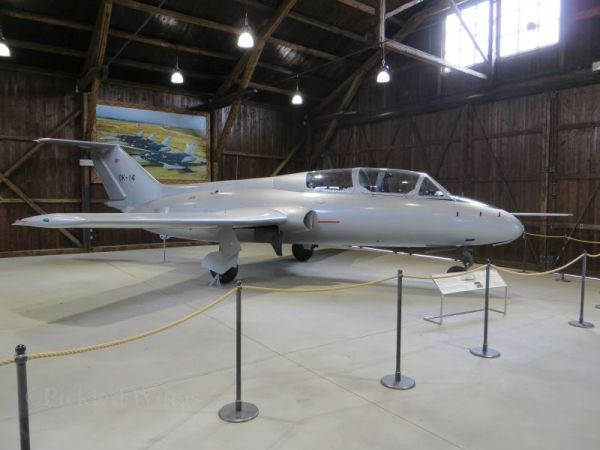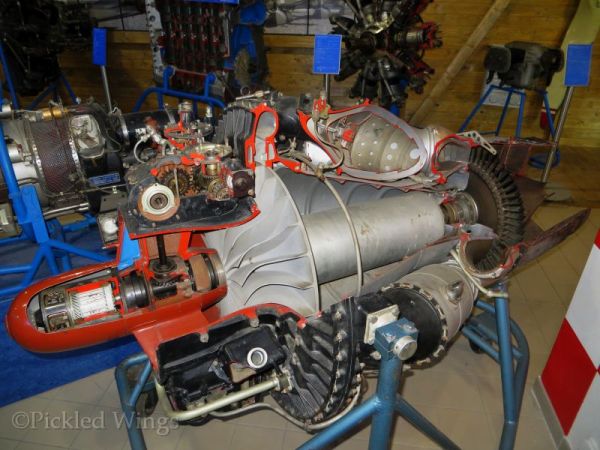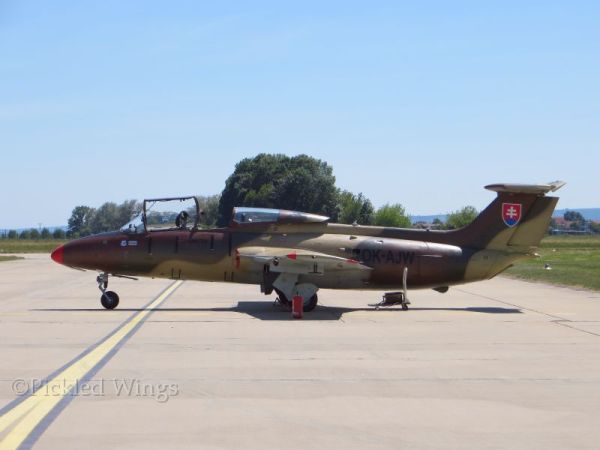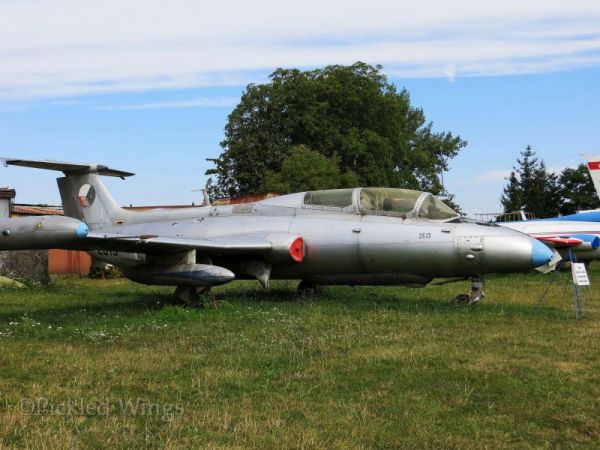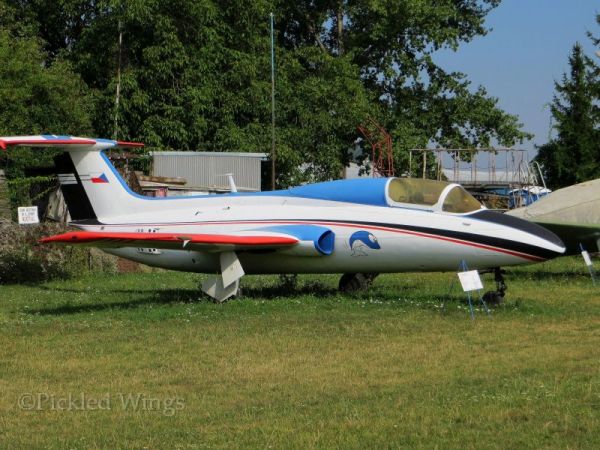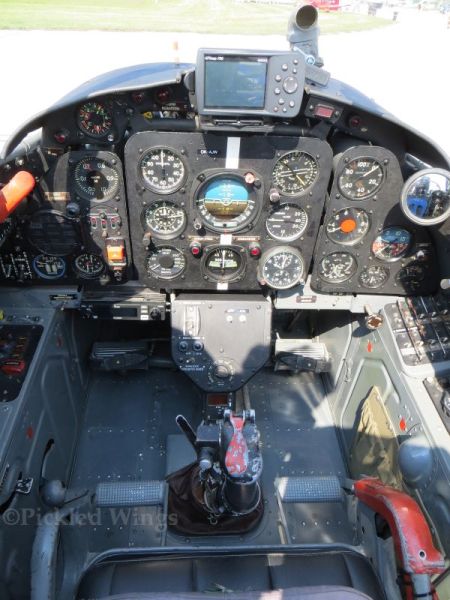
A History of Accomplishment
Aero, founded in 1919, is one of the best known names in the rich aviation history of the former Czechoslovakia and the current Czech Republic. Aero’s L-29 Delfin trainer marked a true historical point in the small nation’s aviation history when it became the country’s first indigenously designed and built jet aircraft.
More impressive than simply being a small nation’s first foray into domestic jet aircraft, the Delfin went on to become the standard basic jet trainer for most of the former Eastern Bloc countries during the Cold War as well as many other nations beyond.
The genesis of the L-29 was a requirement announced in the late 1950s for a standard jet trainer aircraft for the air forces of Warsaw Pact countries. In 1961, the L-29 was successful in competition against two other trainer designs, the PZL TS-11 Iskra from Poland and the Soviet built Yakovlev Yak-30, and became the standard jet training aircraft for the Warsaw Pact.
Worthy of note is that, despite losing the competition, Poland opted to continue development of the Iskra and take it as their standard jet trainer rather than the Delfin.
The Dolphin Show Begins
The Prototype XL-29 took to the air for the first time in April of 1959, powered by a British made Viper turbojet engine. In July of 1960, the second prototype flew with the Czech designed and built Motorlet M-701 engine; this configuration would become the production standard for the L-29.
The development of the M-701 engine ran concurrent to that of the L-29 and saw several changes of design before its final form was approved. It was delays in the development of the M-701 that led to the first flight of the Delfin being powered by the British engine.
Initially, Motorlet designed the engine as an axial flow type turbojet. However, talks with Soviet air force officials in 1956 established that part of the L-29’s abilities would include the ability to operate from grass strips. This resulted in the engine being redesigned as a centrifugal flow type.
The primary reason for a centrifugal flow engine to be specified for the aircraft centred on that type of engine’s lower sensitivity to foreign particle ingestion; a factor that would certainly come into play when operating from grass.
The M-701, in what would be its standard form, was run for the first time in September 1958 on a static testing frame. In November of 1959, flight testing of the engine began using a modified Ilyushin Il-28 bomber. July of 1960 saw the first flight of an L-29 under the power of an M-701.
In a production run starting in 1961 and ending in 1989, over 9,200 M-701 engines were produced. The engine was praised for its high reliability and ease of maintenance in service.
The first full production L-29 came off the assembly line in April, 1963. The Delfin would enjoy an 11 year production run that totaled around 3,600 aircraft between Aero, near Prague, and Let at Kunovice.
Swimming with Big Fish
Not far into the 1950s, air forces the world over realized the need for dedicated jet training aircraft that were built as such from the ground up rather than modified from existing single seat designs. The Delfin was a member of the first generation of training specific jets and was against some very stiff competition indeed to get a toehold in militaries outside the Warsaw Pact and Soviet friendly countries.
Among the Delfin’s contemporaries were the Aermacchi MB-326 from Italy, BAC Jet Provost from Great Britain, Canadair CT-114 Tutor from Canada, Cessna T-37 from America, Fouga Magister from France and the aforementioned PZL TS-11 Iskra from Poland.
In the face of this competition, the Delfin managed to secure work in the militaries of at least 25 countries. An amazing feat for the country’s first domestically designed and built jet aircraft and testament to the competence of its creators.
A Dolphin’s Life
The L-29 existed in a remarkably small number of variations for an aircraft with a production run of well over 3,000.
The baseline L-29 trainer was a very clean aircraft from an aerodynamic standpoint with only the rather crudely mounted speed brakes on either side of the rear fuselage to mar its lines.
The L-29R reconnaissance version was created by attaching a fairing for photographic and sensor equipment under the forward fuselage and semi-permanent auxiliary fuel tanks on the wingtips to improve the aircraft’s range.
Both military variants had a hardpoint under each wing to allow for extra fuel or a range of light, unguided weapons to be carried.
Beyond the two major military variants, two examples of the single seat L-29A Akrobat version were built. The L-29A was aimed at the civilian sector and intended as a high performance aerobatics machine. The L-29A differed from its military counterparts not only in having a single seat but also having perforations in the fuselage mounted speed brakes.
The two L-29A aircraft were built in 1967 and displayed at home and abroad into the early 1970s, this included performances at the 1969 Paris Aerosalon event.
Unfortunately, as part of the “Normalization” of Czechoslovakia that followed the Prague Spring demonstrations of 1968; the two aircraft were ordered grounded by the government in the early 1970s for fear they could be used by potential defectors.
In military service, the L-29 was categorized primarily as a basic, intermediate and weapons training aircraft. Being cast in the role of a trainer did not keep the Delfin from seeing combat.
Egypt used the L-29 against Israeli forces in the Yom Kippur War of 1973 while, in the late 1980s and early 1990s, Azerbaijan forces used them against the Armenian military in the Nagorno-Karabakh War.
The Delfin Today
While the L-29 has long since been replaced by another Aero product, the L-39 Albatros, in almost every military it served in; it has found a successful second life in civilian circles as a relatively cheap jet that often is used to give people with a fast jet flight on their “bucket list” a chance to fulfil that dream.
Most civil registered L-29s are American based though others are known to have been registered in Canada, Czech Republic, Italy, Russia, South Africa and the UK among others.
This link will take you to a dedicated page about the L-29 on Aero’s website:
L-29 page at aero.cz
This link will take you to a brief summary of the L-29 from the Czech Ministry of Defense:
L-29 page at army.cz
This link will take you to an article about the L-29 at the Czech Military Historic Institute website:
L-29 page at vhu.cz
